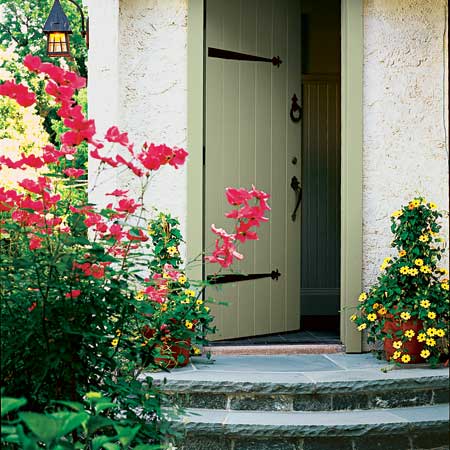skip to main |
skip to sidebar
I thought I would share a few photos to show a glimpse of where we started and where we are now.
When the renovation was at its worst, I didn't have the heart to take a photo. Truth be told, during those times I would sing for joy, do a happy dance, pray "the nightmare" would be over soon. Just being real.
It's challenging to envision a kitchen in a 150 year old stinky house in a space that was the living room-turned-dining room, especially when there are just mounds of filth and no floor...but I'm glad we didn't give up!
Yesterday I walked into our Farm-inspired kitchen, and even though it isn't quite finished, I. Am. Thrilled.
Okay, let's get this done! You should have your vanity built [your doors should open for easy access to plumbing]. It should be painted and your zinc top on (I found you can purchase 36-inch rolled flashing if you want a wider top). Your bucket-sink should be dry fitted in. Now the plumbing.
Bucket:
1) You cannot use the drain that comes with most faucets. The bucket bottom is too thin. You'll need a common drain that doesn't close or hold water. See the top photo. You will need a drill and bit.
2) Drill a hole in the center of the bucket bottom according to directions. Wear eye and hand protection! Be careful not to push on the bucket bottom because of the bottom seam. Drill with it secured to a solid surface.
3) Use tub and kitchen CLEAR sealing *caulk* [see Part One] around drain opening. Push drain into place. Wipe excess sealant off. Let it set up according to sealant directions. I added more after it was installed, PLUS around the entire bottom seal because that's a weaker seam. It dries clear.
Faucet: We purchased chrome wall-mounted kitchen faucets. We like the bigger size of kitchen versus bathroom, the ability to swing the faucet out of the way and we adored the look. Uh.....they're not easy to install. If you're not at least moderately experienced, I suggest to do a deck model faucet
Duly warned, let's proceed. :)
1) Dry-set your bucket in the opening and clamp the backsplash into place. Mark the center and height for your faucets. Wall-mounts don't come with a deck cover, so no *do-overs* or cheating to the left or right. On the other hand, building another backsplash is easy.
2) Drill the holes as needed.
3) Because we're not attaching them to a thin cast iron sink back, but 3/4-inch thick wood, you may need to get plumbing spacers. We went to our local hardware store and they helped. Plus, our faucets were *jiggly* so we used Shower CURTAIN ROD mounts on the front that were screwed in and washers on the back to secure them! Worked great.
4) Once you've gotten the faucets on, do a happy dance...and then bolt on the backsplash.
5) Plumb everything to your drains and water supply. This vanity is a "stand-alone" vanity because I like the furniture look, but we still placed it in a corner.
6) Test it for leaks.
7) Enjoy!
You can add a shelf below to help hide the plumbing, but I chose to decorate instead.







